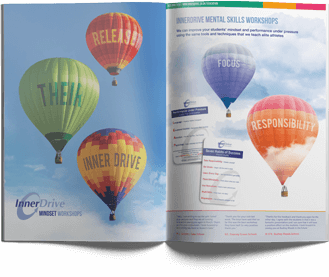The Education Endowment Foundation have just released their latest guide on how schools can improve their teaching methods with smart implementation strategies. It takes an extensive look at implementation as a step-by-step process. This update breaks down the details of putting these strategies into action and shares three useful tips for getting it right.
Though we do recommend you read the full article, we wanted to offer you a concise summary of the review in this blog. So, let’s take a closer look at the key recommendations…
1. Adopting the behaviours that drive effective implementation
One of the key themes highlighted in the report is the importance of adopting specific behaviours that underpin successful implementation. According to the EEF, "implementation is fundamentally a collaborative and social process driven by how people think, behave and interact”. This finding emphasises the need for a shared commitment to change, continuous professional development, and an openness to adapting based on feedback and results.
To achieve this, they suggest three core elements:
- Engage staff so they are involved in shaping what happens.
- Unite staff around what is being implemented so that their actions are aligned with a shared value and belief.
- Reflect on current practices and the schools progress to enable them to learn and adapt.
Actively engaging school staff and stakeholders in the implementation process, creating a united vision and consistently reflecting on progress to make necessary adjustments are crucial for effective implementation.
2. Attending to the contextual factors that influence implementation
The second major finding of the report focuses on the significance of contextual factors in the implementation process. The EEF states that, for behaviours to successfully drive implementation, it is influenced by “what is being implemented, the existing systems and structures, and whether there are people in place who can enable change”.
This suggests it's not just about picking a new strategy or tool based on its potential effectiveness; it's also crucial to consider the broader context of the school environment, resources available, the readiness of staff and the capacity for change.
Therefore, it is important for schools to focus on three things:
- Consider whether what is being implemented is evidence-informed, appropriate and feasible to implement.
- Develop systems and structures that support implementation. Ultimately, "implementation relies on a range of system and structures that create conditions for those interactions to occur”. For example, time allocation or data systems.
- Ensure people who enable change can support, lead, and positively influence implementation. This relies on their knowledge, expertise and empowerment.
By considering these factors, educators can guarantee that selected interventions are both theoretically ideal and practically possible.
3. Using a structured but flexible implementation process
Finally, the report advocates for a balanced approach to the implementation process, one that is both structured and flexible. The EEF report mentions that "without a structured process, the behaviours and contextual factor that underpin effective implementation can be hard to enact… nevertheless, implementation doesn’t occur in a neat and linear fashion: strategies and phases overlap and are revisited overtime”.
This means that understanding and applying a structured process, while simultaneously remaining flexible enough to adapt to unforeseen challenges, is essential. This approach allows schools to follow an evidence-informed plan while also remaining responsive to the dynamics of the educational environment.
To address this, the report suggests to:
- Use a structured process to apply the behaviours to your day-to-day work. This involves a plan that outlines specific goals, strategies, timelines and responsibilities.
- Organise practical and tailored implementations into four manageable phases: explore the issue, prepare fully, deliver the changes, and sustain and embed effective practices.
- Treat implementation as a process of ongoing learning and improve.
This structured yet flexible approach supports a continuous learning culture within schools. In essence, effective implementation hinges on a school's ability to balance rigor with adaptability. Making sure that new educational practices are not just introduced but also maintained, developed and rechecked overtime.
Final thoughts
This review provides a comprehensive roadmap for schools looking to adopt new educational practices successfully. By focusing on the behaviors that drive effective implementation, attending to contextual influences, and balancing structure with flexibility, educators can significantly enhance the impact of their interventions.
This summary merely scratches the surface of the wealth of information provided in the paper. Teachers and school administrators are strongly encouraged to explore the full report to gain deeper insights into implementing educational innovations effectively.







